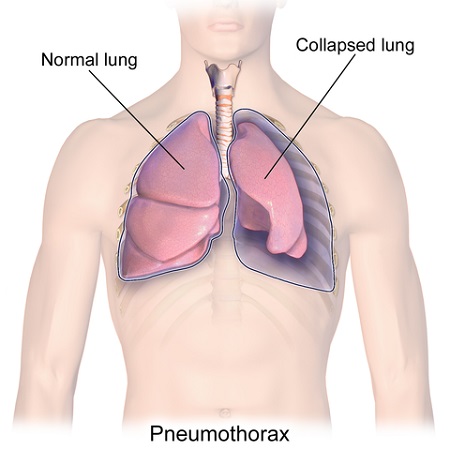Thoracostomy is a procedure that inserts a thin tube of plastic into the space between the lungs, the chest wall, and the stomach. To remove fluids or air, the doctor might attach the tube to a suction device.
The doctor might use the thoracic chest tube to inject medication into the area to reduce the possibility of fluid accumulation. To treat a pneumothorax (also known as collapsed lungs), your doctor may recommend thoracostomy.

Image Source: Google
Your doctor will give you instructions on how to prepare and any changes to your medication schedule. Discuss with your doctor any medical conditions or allergies you have. You may be asked to stop taking nonsteroidal anti-inflammatory drugs (NSAIDs), aspirin, or blood thinners a few days before your procedure.
Thoracostomy, a minimally invasive procedure, involves the doctor inserting a thin plastic tube in the pleural space — between the chest wall & lungs. To remove fluid or air, they may attach the tube and suction device. They may also use the tube to deliver medication into the pleural space.
To help place the chest tube, the doctor might use either computed tomography(CT), fluoroscopy (US), or ultrasound to guide him.
The pleural space is surrounded by two thin membranes. One wraps around your lungs and the other runs along the inner wall of your chest. The space between the two membranes is usually filled with a small amount of lubricating liquid. The fluid aids in breathing by allowing the lungs to move inside the chest cavity.